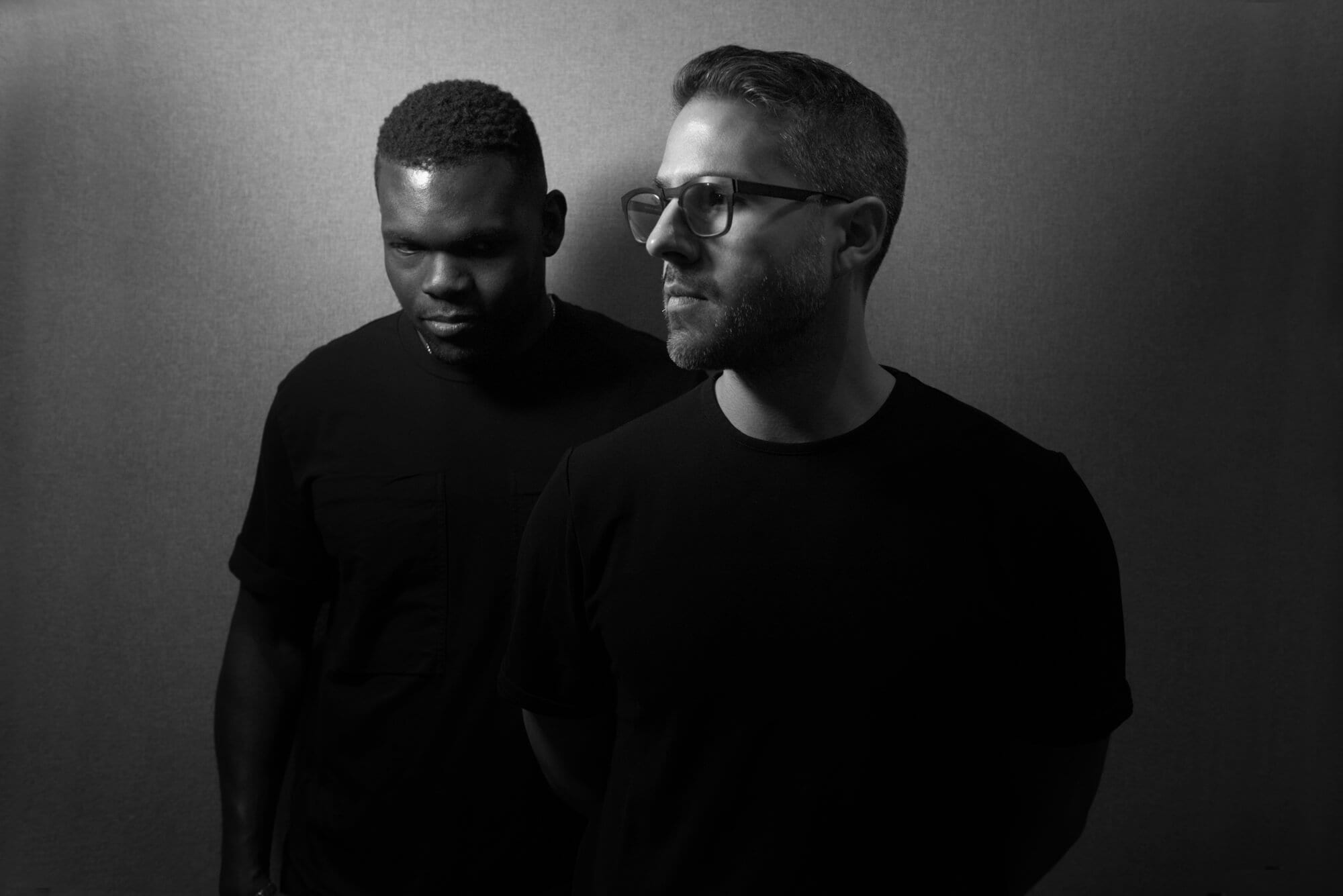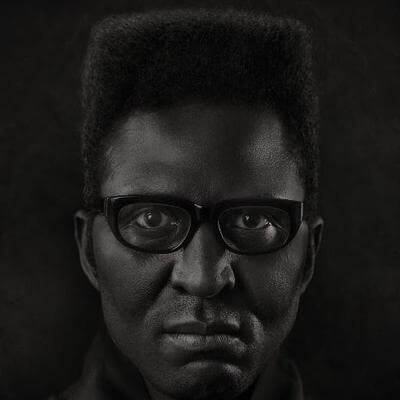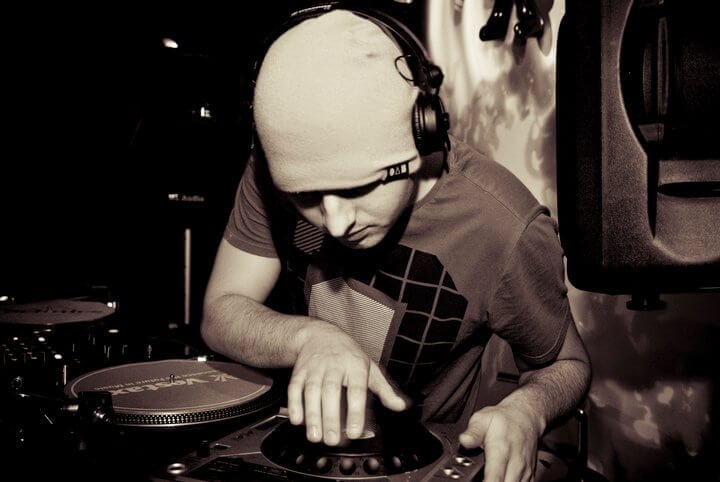November 17 2017 was a historic day in drum & bass as Future Cut played their first set in years. A Soul In Motion special on a seemingly innocuous Thursday night, the following morning our timelines were awash with hype. Their comeback was so significant Goldie and Chase & Status turned up to support them.
But then what else would you expect from a duo with such a decorted contribution to drum & bass? Tunde Babalola and Darren Lewis didn’t so much as break through, but totally annihilate through on Renegade Hardware in 1998 and spent the following five years denting the dickens out of the turn of the century with an endless string of multi-shaded, unpredictable but consistently hard-hitting drum & bass on the likes of Renegade, Trouble On Vinyl, Metalheadz, Infrared and V. 20/20, Horns 2000, Obsession, Dominator, Tear Out My Heart, Bloodline. The list of seminal shredders goes on and on…
They also ran a fine-line in more soulful, musical material. Teaming up with Jenna G to form Un-Cut, their string-surged spine-melter Midnight saw them peeping their head above the underground trenches and attracting major label attention, leading to their album The Un-Calculated Some. Still dripping in funk and soul and joining the dots to some of drum & bass’s warmest roots and references, the album took the duo out of the game for a spell which eventually led to their unplanned departure from drum & bass… And arrival in the world of pop.
Over the last 15 years Future Cut have applied the same level of detail, groove and production dexterity in much more mainstream circles. Long before the pop drum & bass tsunami earlier this decade, Tunde and Darren were writing hits with the likes of Lily Allen, Busted, Shakira, Olly Murs and many more household names, setting one of the strongest examples of how drum & bass’s technical and creative influence runs deep – and almost always unseen – across a much wider industry spectrum than it’s often given credit for.
But as Darren says himself, “once you’ve got the bug, you’ve got the bug”. Remaining tuned into the underground since their departure, they always knew the Future Cut machine would be fired up again… It was just a case of when.
20 years since their debut Future Cut release, that time is now. A series of carefully-selected DJ shows (including Fabriclive on February 9) follows a soft-launched series of remastered re-releases and rarities (in the form of their 168-174 series which has so far blessed us with the likes of Calibre’s remix of Chinese Silk, 20/20 VIP, Popcorn and Whiplash) and things are set to amplify even more with their first new productions in over 12 years.
We can exclusively confirm that eight new Future Cut tunes are locked, loaded and ready for release this year. Speaking to them, we get the impression they’re only just warming up. Here’s where Future Cut have been, where they’re at and as much of where they’re heading as they’re able to reveal right now…
This comeback all started at Soul In Motion last November, right?
Darren: Yeah it was an amazing opportunity to get back on the decks, it’s been so long. The guys asked if we were interested and we couldn’t say no, really.
That photo with you guys, Chase & Status, Goldie, Bailey and Rage tells a million words…
Tunde: It really does. It was nuts actually. They came down as a surprise, we had no idea they were coming down. Goldie was hugely influential and helpful to us and we had a very strong connection with Chase & Status from the very start of their career. Two of our closest allies in drum & bass, to be honest. It was an emotional night.
So what triggered it all?
Darren: We’re terrible at organising our archives. We’ve been saying ‘let’s sort out the DATs’ for about 12 years. Like an ongoing joke. Then we had an intern who turned out to be a big drum & bass fan and producer so we offered him the task. He could listen to everything he wanted but had to catalogue it, transfer it to wav, trim the files and everything. It took him months but it was amazing; we’ve got our entire back catalogue all organised in a format we can use. We sat on it for a while then realised we’d been working together for 20 years so thought about putting it out.
That must have brought back lots of memories
Tunde: For sure. It was also very emotional because of Marcus passing away. I knew him since I was 14. Darren lived with him for five years. Mixed up in those DATs were collaborations with him and Lee ST Files. It was like looking at an old photo album. It was very strong for us. We could even taste what we were eating on those days, you know?
Nothing brings back those memories like music
Tunde: Without a doubt. So anyway, we were inspired by a lot of these old songs and we were working with a few other people from the drum & bass scene, just as friends, sharing ideas and developing things and suddenly found ourselves with a couple of proper bangers. We’re now sat on around six or seven and they’re finding homes.
Woah… New Future Cut!! When and where?
Tunde: We can’t quite say yet. But yeah there’s new stuff coming and it’s on its way on some pretty big labels.
Amazing. So let’s go back to your departure from drum & bass. I always thought the Un-Cut project attracted major labels and that’s how you ended up as producers in the pop world. Was that right?
Darren: It was the catalyst for sure. Un-Cut did get signed by a major, which took us out of the underground loop for a while. The problem was that at the time the majors didn’t understand underground dance music at all. They tried to push us through a route we wouldn’t have chosen. We had the same marketing team as Kyle Minogue for instance! They didn’t understand the importance of vinyl at the time and how important it was to remain relevant to our core crowd.
So during that record we felt we lost touch with the scene. We came back and did a few gigs but in all honesty our mojo for drum & bass had departed. We’d been in the scene since kids in the late 80s and had lost our edge for it a little. The biggest sell-out to us wasn’t making pop records, it was to take money off promoters and fans who were coming to see us and not giving them what they wanted. That would have been a much bigger sell-out. So we took a step back for a while. And during that time, a friend of a friend of a friend of a friend introduced us to an unsigned act who happened to be Lily Allen. And that’s where things took off in that world. It wouldn’t have happened if it wasn’t for Un-Cut though for sure. It was a mad journey and has been ever since.
Back then drum & bass producers weren’t known for moving in the pop world. It was a different time wasn’t it? The path you took found yourselves on was ahead of its time in that way…
Darren: It was a big leap, definitely. What’s weird for us is that between 1989 to 2002 our knowledge of pop music was non-existent. Even now we’ll be given a 90s pop act as a reference when we’re working with someone and we’ll have no idea who they are. You’re right; the two worlds weren’t really connected at all then and there’s no way we could have done what Chase & Status did a few years later and what Sigma have subsequently done. The connections just weren’t there.
I’m often told by artists that if you can make D&B at the top level you can make anything. Would you agree?
Darren: It’s definitely at the cutting edge and always has been. People – and by that I largely mean the wider industry and critics who don’t really understand the genre – don’t give it the credit it deserves. UK garage, grime and dubstep wouldn’t be where they are without drum & bass’s influence. It’s always punched well above its weight as a genre of music that sometimes doesn’t get that recognition.
What did you make of the commercial wave that happened years later? Were you tuning in and following it all?
Tunde: We were aware of it of course. But first and foremost if take the tempo away and ask yourself – is it a good song? Rudimental’s Feel The Love was a good song. Sigma’s Changing was a good song. They just happened to be at drum & bass tempo. Things can be pop songs at drum & bass tempo but you’re hardly going to smash that in an underground club. But on the flip side, if there’s some kid who’s first heard music like that at that tempo then starts digging then it’s a good thing. Almost everyone who’s into underground music starts with exposure to commercial tracks.
Did you think about a comeback during that peak commercial D&B stage?
Tunde: Some people did suggest it but that would have felt like jumping on a bandwagon. If we were going to do that then we should have done it a few years before. By then guys like Sigma and Fresh were already filling that role and we wouldn’t be doing anything unique.
Darren: I do get why a lot of artists and fans didn’t like it. When you’re in the midst of a scene and that’s your life then you do turn your nose up to it. That’s kind of your job. Especially if you’re making that music and you’re spearheading it. You want to keep it special. Who wants to be part of a cutting edge scene when it has something in common with your nan because she likes a record on Radio 1? That’s not what the underground is about. So I agree with Tunde and I think the mistake is made when people compare pop songs that happen to be at drum & bass tempo with the underground sound. But those early exposure tunes have always been there – M-Beat’s Incredible, Shy FX’s Shake Your Body.
Tunde: There’s another side to this, though, which is really exciting. And that’s when certain records do push the experimental agenda because of their popularity. Which is what’s happening with grime right now. That wouldn’t have been deemed daytime radio music but because of the groundswell of interest and demand, stations are forced to play it.
Darren: The same thing happened with New Forms. The minute that won the Mercury Prize radio stations couldn’t ignore it. Sure the album had some vocal moments and lighter shades that made it easy to make that transition to daytime radio but it was one of the most authentic and legitimate drum & bass albums since Timeless.
Tunde: You know I can see that happening again with a lot of artists who have established themselves with quite a radio-friendly sound, returning to a more experimental underground sound.
Darren: It’s happening with us! Our new material is back to classic meat and potato Future Cut. No big melody or chords, just proper drum & bass. Records that work in a certain space.
Where you at with contemporary drum & bass?
Tunde: I’ll always love the old stuff more because that’s very special to me personally but I’ve always kept up to date. I ask everyone I work with who’s interested in drum & bass what they’re into and which producers are doing what.
Darren: Same here really. Once you got the bug you got the bug!
You’ve got a lot of shows coming up, you must have been buying some records. Who’s impressing you?
Tunde: Ulterior Motive have been on our radar for a long time. Rene Lavice is making some great tunes. The Manchester guys, obviously.
Yes. You must be proud of your city! Everyone from Children Of Zeus to Dub Phizix via Chimpo. Manchester has so much amazing talent right now.
Darren: It’s funny – we remember George (Dub Phizix) when we were still doing Future Cut stuff. He was just starting out at the time.
Tunde: It’s great to see his evolution. We actually did a tune with him back in around 2002
What does that sound like? Worth revisiting?
Tunde: We have thought about taking it up to him next time we’re in Manchester.
Darren: We’ll get back to you on that one.
So, new stuff…. What can we hint at?
Darren: We’ve got about seven or eight finished tunes. The one thing I can say is that the common thread is that there isn’t a common thread. Stylistically they’re all over the place.
Tunde: We need armoury for our sets so it’s all focused on the dancefloor
Darren: Some is focused on the dancefloor side. There’s some Headz sounding stuff like what we used to do. There’s darker stuff, lighter stuff.
Tunde: Some big collabs as well.
Cool!
Darren: Yeah it was very natural and organic. These things all came together in their own way which was really important for us. It’s really exciting actually.
So in the time since you last made D&B, mixdowns have become an even bigger beast. Someone told me music has got 20 decibels louder in the last 20 years or something….
Darren: That sounds about right. But the mixdown was always a beast to tame back in the day. Technical ability has got better and the equipment has got better but the ethos hasn’t changed.
Tunde: Now the constraints of vinyl have gone things are more open. The direct range of vinyl meant you were always going to lose a little subs and tops. But with lossless files or wavs you can keep that range and width. So now you can have super wide, super low, super toppy tracks that have that full dynamic range.
Darren: The bigger leap has been how technology has changed the arrangement. Back in the day we were still playing dubplates and vinyl. Now it’s USB sticks and that takes out a lot of elements that were prohibitive. Unless you were Andy C you couldn’t play four songs in two minutes because you’d have to cue up the vinyl. But with cue points now you can do anything. Mixing has changed hugely. Much more than mixdowns.
So you’ve had to polish up your mixing skills a bit?
Darren: That suggests there was something to polish! We had to start from scratch – we’d never used CDJs before. When Soul In Motion called we were like ‘shit! We’ve got to learn to use these!’ Pioneer properly hooked us up in fairness and we practised until we were sure we were confident. We’re from the steam age of mixing so that was probably the biggest leap for us but it’s like everything we’ve done… We’ve dived in at the deep end and not looked back!


